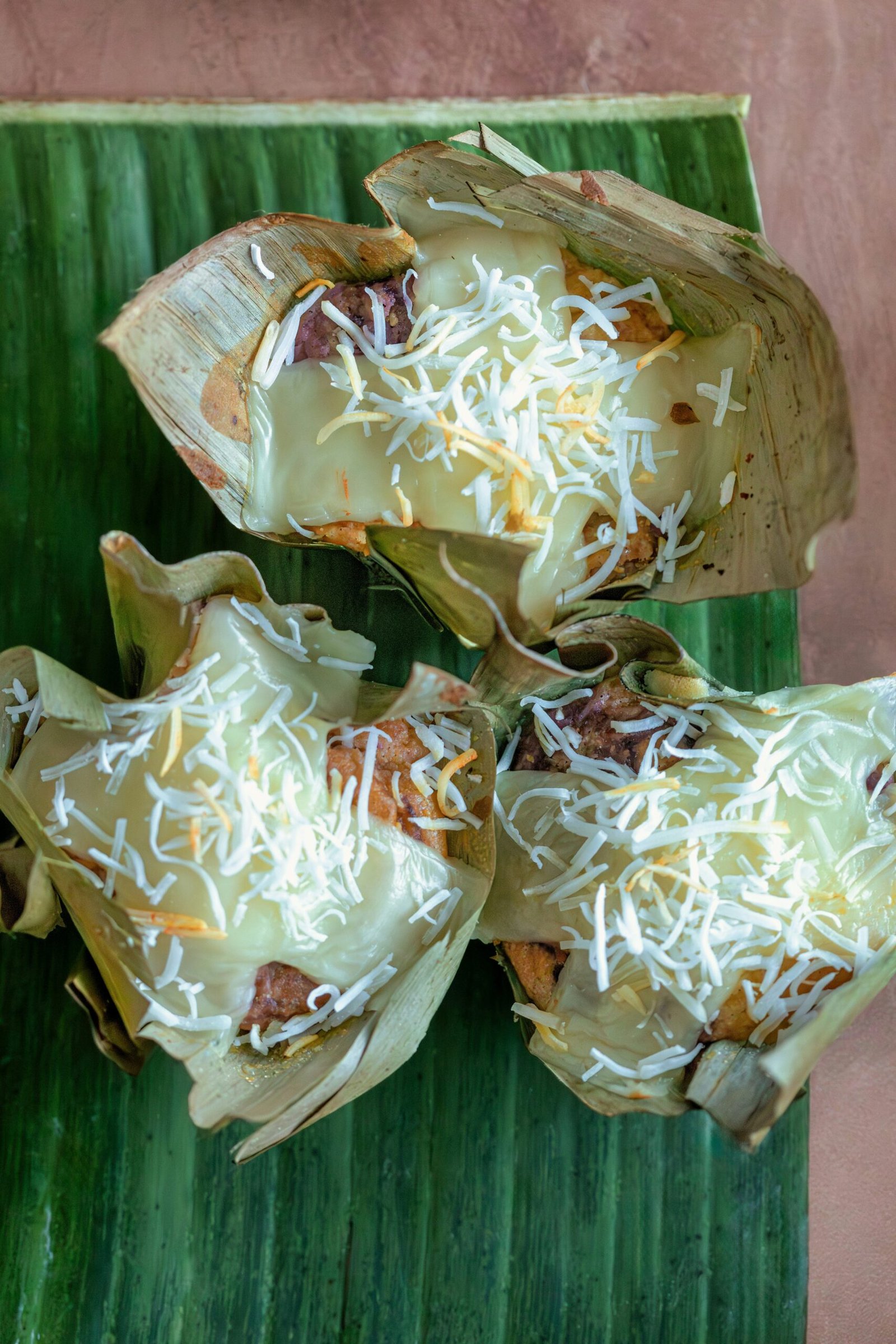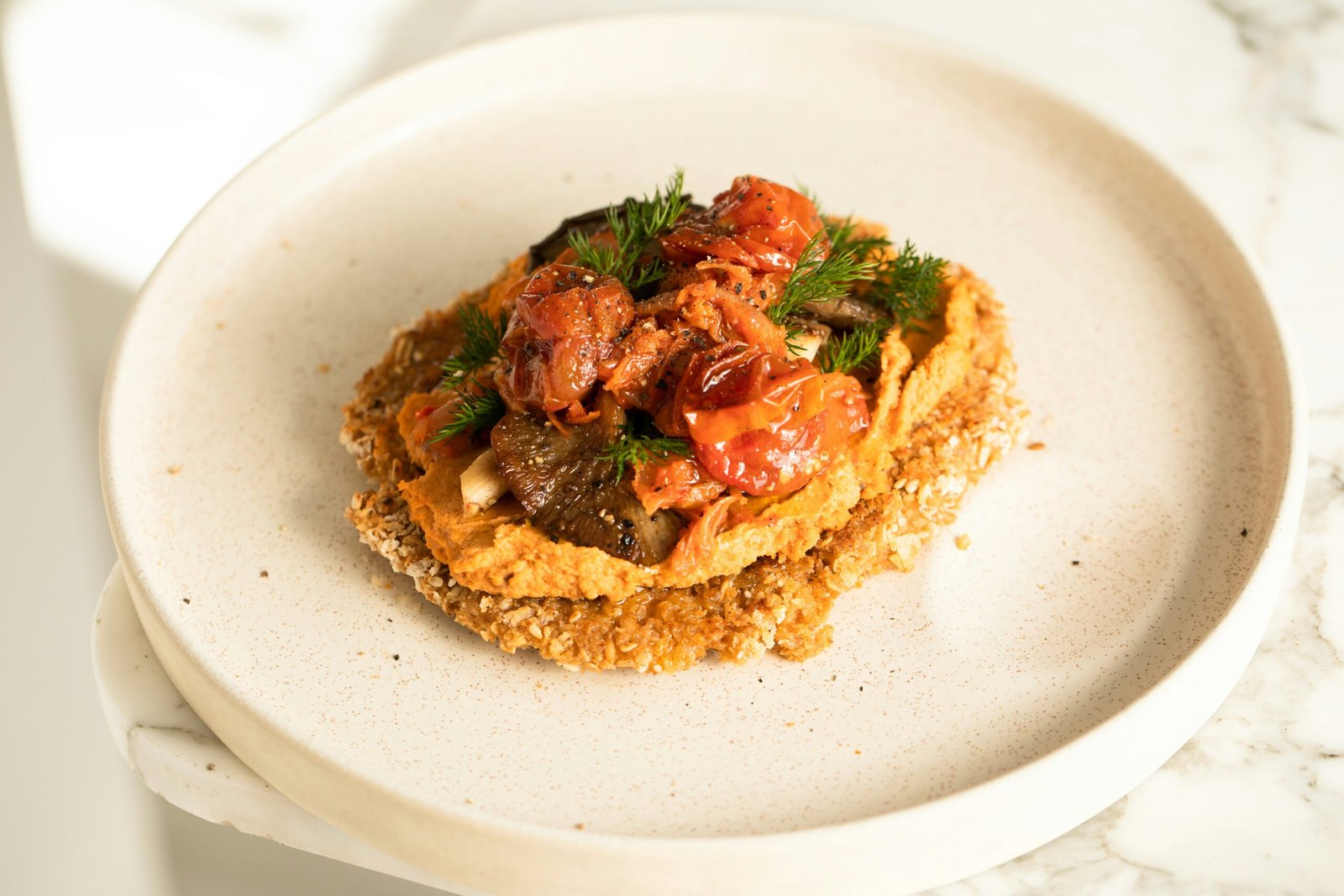Introduction to Comfort Foods
Comfort foods are dishes that evoke feelings of nostalgia, warmth, and security. They vary across cultures, often tied to familial traditions and local ingredients, creating a rich tapestry of comfort that reflects diverse culinary heritages. The fall season, characterized by its cool weather and shorter days, intensifies the appeal of these soothing meals. As temperatures drop, the desire for hearty, warming dishes increases, prompting individuals to seek solace in familiar favorites.
The connection between comfort food and emotional well-being is profound. Many people associate certain dishes with cherished memories or significant moments in their lives, making them more than just sustenance. For example, a bowl of warm soup might remind someone of their grandmother’s kitchen during a chilly autumn day. This emotional resonance plays a crucial role in why individuals gravitate toward these meals during the fall months. Sharing such foods with friends and family can foster togetherness, ensuring that the act of eating becomes a communal and bonding experience.
In various cultures, comfort foods often incorporate seasonal ingredients, allowing for a delightful exploration of flavors unique to the fall. Pumpkins, squashes, and root vegetables often take center stage, transforming into comforting soups, stews, or pies that satisfy both hunger and the soul. Additionally, many cultures celebrate harvest festivals, where comfort foods are proudly showcased, symbolizing gratitude and abundance. These culinary traditions highlight how different societies embrace the season and the comfort it brings through the food they prepare.
Ultimately, comfort foods not only provide nourishment but also serve as a bridge between generations and communities. As we embrace the arrival of fall, exploring these beloved dishes offers a chance to connect with our heritage while finding warmth and satisfaction in the simplest of meals.
Italian Risotto: A Creamy Classic
Risotto, a quintessential dish of Italian cuisine, holds a significant place in both culinary traditions and cultural identity. Originating from Northern Italy, particularly the Lombardy region, risotto is primarily made with Arborio rice. This short-grained rice variety is known for its high starch content, which is essential for achieving the creamy texture characteristic of a well-prepared risotto. The dish embodies the Italian philosophy of using simple, high-quality ingredients to create something extraordinary.
The preparation of risotto is an art in itself. Traditionally, it begins with sweating onions in olive oil or butter, allowing them to become translucent before adding the Arborio rice. The key to achieving the rich, creamy consistency lies in the gradual addition of broth. It is essential to stir the mixture continually to release the starch from the rice, creating a velvety sauce that envelops each grain. This technique distinguishes risotto from other rice dishes and contributes to its luxurious mouthfeel.
Risotto’s versatility is another aspect that enhances its status as a comfort food. While mushroom and seafood risottos are popular variations, chefs and home cooks alike often experiment with seasonal ingredients. For instance, incorporating pumpkin or butternut squash into the risotto is particularly delightful in the fall months, offering a warm, earthy flavor profile that’s perfect for colder weather. For those looking to prepare risotto at home, it’s advisable to use homemade broth for added depth and flavor.
In conclusion, risotto is more than just a dish—it’s a representation of Italian culinary heritage. Its creamy texture and rich flavors make it a beloved comfort food, inviting individuals to explore its various iterations. Whether enjoyed in a rustic kitchen or an upscale restaurant, risotto is a timeless classic that continues to warm hearts and palates as the seasons change.
Japanese Ramen: A Noodle Bowl of Warmth
Originating in Japan, ramen has evolved from a simple noodle dish to a culinary phenomenon, celebrated worldwide as a comforting and nourishing meal. The roots of ramen can be traced back to Chinese wheat noodles that were introduced to Japan during the 19th century. Over time, this dish adapted to local tastes and ingredients, leading to a variety of flavors and preparations that have made it a favorite comfort food.
Among the most popular types of ramen are tonkotsu, characterized by its creamy pork bone broth, and shoyu, which features a soy sauce-based broth that offers a lighter yet complex flavor. Each type of ramen showcases the meticulous craftsmanship behind creating the perfect bowl: from the rich and savory broth to the tender noodles and an array of fresh toppings. Common toppings include sliced chashu (braised pork), soft-boiled eggs, green onions, and nori (seaweed), with each adding unique textures and flavors to the dish.
Making ramen from scratch might seem daunting, but with a little guidance, it can be both enjoyable and rewarding. To prepare the broth, begin by simmering pork bones, chicken, or vegetables for several hours, allowing the flavors to meld into a savory base. The choice of noodles is equally important; fresh ramen noodles provide an authentic experience, while dried varieties can be substituted when necessary. Finally, consider an assortment of toppings that suit your preference, as this customization is what truly transforms a simple bowl of noodles into a personal comfort food masterpiece.
Ramen not only satisfies hunger but also offers warmth and comfort during the colder months, making it an essential dish to savor this fall.
Moroccan Tagine: A Taste of North Africa
One of the most iconic dishes of Moroccan cuisine is the tagine, named after the conical earthenware pot used to prepare it. This traditional North African dish is known for its layers of flavor, achieved through a slow-cooking process that allows spices, meats, and vegetables to meld beautifully. Commonly used spices include cumin, coriander, saffron, and cinnamon, which infuse the tagine with a warm and aromatic essence. The addition of ingredients such as preserved lemons, olives, and dried fruits enhances the dish further, giving it a unique balance of sweetness and savory depth.
While the traditional protein for tagine can include lamb or beef, chicken tagine has gained immense popularity due to its versatility and lighter profile. Famous for its communal aspect, tagine is often served in the center of a dining table, inviting guests to share and interact over the meal. This practice of sharing demonstrates the Moroccan value of hospitality, creating a warm and inviting atmosphere for all diners.
A classic chicken tagine recipe starts with marinating chicken pieces in a blend of spices, olive oil, and garlic. After browning the chicken, it’s typically combined with onions, carrots, and a variety of other vegetables. The tagine should then be covered and simmered on low heat for several hours, allowing the flavors to develop richly. For those with dietary restrictions, substituting chicken with chickpeas or assorted vegetables can present a delightful vegetarian option, ensuring everyone can enjoy this exquisite dish. Additionally, one can easily adjust the spice levels to cater to palates of all ages, making it an adaptable choice for any dinner gathering.
Ultimately, Moroccan tagine serves not just as a dish but as a symbol of sharing and togetherness, making it a perfect comfort food to enjoy this fall.
Indian Butter Chicken: A Rich and Flavorful Dish
Butter chicken, known as “Murgh Makhani” in Hindi, is a quintessential dish from Indian cuisine, celebrated for its rich, creamy sauce and aromatic spices. The origins of this beloved dish date back to the 1950s, when it was created by the chefs at the Moti Mahal restaurant in Delhi. The innovative use of leftover chicken in a buttery tomato gravy quickly became a hit, capturing the hearts and palates of locals and tourists alike. Since then, butter chicken has transcended geographical boundaries, becoming a staple in Indian restaurants worldwide.
The appeal of butter chicken lies in its unique balance of flavors and textures. The marinated chicken pieces are tender and succulent, having soaked up various spices such as garam masala, cumin, and coriander, which infuse the dish with a warm flavor profile. The addition of a luxurious cream and butter base lends a smoothness that perfectly complements the spiced chicken, resulting in a dish that is both indulgent and satisfying. This harmonious blend of spices and creaminess makes butter chicken an ideal comfort food, especially during the colder fall months.
Making authentic butter chicken at home can be a rewarding culinary experience. To begin, marinate the chicken in yogurt, lime juice, and a mixture of spices for several hours or overnight to enhance the flavors. Cooking the chicken until it is perfectly tender and then adding it to a sauce made from tomatoes, onion, ginger, garlic, and butter creates the quintessential taste. Serve this delectable dish with naan or basmati rice, which soak up the rich sauce beautifully, making each bite a delightful experience. With its irresistible charm and delightful flavors, butter chicken is an essential comfort food to experience this fall.
Global Comfort Foods to Embrace This Fall
As the chill of autumn sets in, the thought of warm and hearty meals becomes increasingly appealing. Global comfort foods offer a delightful way to experience diverse flavors and culinary traditions while providing the cozy nourishment we seek during the cooler months. This fall, consider exploring several international dishes that not only capture the essence of comfort but also introduce you to a variety of unique ingredients and cooking techniques.
French onion soup is a quintessential comfort food that embodies warmth in a bowl. This classic dish is made with slowly caramelized onions, giving it a rich sweetness. The savory broth is typically enhanced with beef stock, herbs, and a splash of sherry, creating a depth of flavor that is further elevated by a topping of crusty baguette and melted Gruyère cheese. Each spoonful envelops the palate in a delightful embrace, perfect for chilly evenings.
Another dish worth trying is Spanish paella, a vibrant and colorful rice dish that hails from Valencia. Combining saffron-infused rice with an array of fresh seafood, chicken, and seasonal vegetables, paella is a communal dish that brings people together. The diverse flavors and textures make every bite a celebration of culinary heritage, and the aroma that wafts from the pan is nothing short of irresistible.
Finally, Brazilian feijoada offers a hearty and satisfying meal that stands as a symbol of comfort food in Brazil. This black bean stew is traditionally made with a mixture of smoked and salted meats, including pork and beef, simmered slowly until tender. Served with rice, collard greens, and orange slices, feijoada delivers a complex flavor profile that warms both body and soul. Each dish invites a new experience, encouraging you to embrace the diversity of the world through food this fall.
The Health Benefits of Comfort Foods
Comfort foods are often associated with indulgence and nostalgia, but they can also offer various health benefits when prepared with wholesome ingredients. These dishes not only satisfy cravings but also nourish the body and mind. Research indicates that foods rich in complex carbohydrates, healthy fats, and lean proteins can boost serotonin levels, a neurotransmitter linked to mood regulation. This physiological response can lead to an improvement in overall emotional well-being and create a sense of contentment.
Additionally, comfort foods often evoke fond memories, which can trigger positive feelings associated with past experiences, further enhancing psychological health. The act of enjoying a favorite dish can transport an individual back to simpler times or cherished family gatherings, fostering a sense of belonging and comforting familiarity. Foods like homemade soups, hearty stews, and baked goods can elicit these feelings, making them more than just meals, but rather a means of emotional support and connection.
To maximize the health benefits of comfort foods without compromising flavor, consider mindful ingredient substitutions. For instance, replacing white flour with whole grain options enhances fiber content, which aids digestion and can improve heart health. Incorporating plenty of vegetables not only adds essential nutrients but also enhances the texture and flavor profile of a dish. Additionally, using spices and herbs can boost both taste and nutritional value without excess calories or sodium.
In summary, the health impact of comfort foods extends beyond mere satisfaction of taste buds. When made with care and attention to quality ingredients, these dishes can offer both physical nourishment and emotional upliftment, contributing positively to one’s overall well-being during the fall season.
Tips for Making International Comfort Foods at Home
Recreating international comfort foods in your own kitchen can be a rewarding culinary adventure. To begin with, sourcing authentic ingredients is key to achieving the original flavor and texture of your desired dish. Many ethnic grocery stores carry a diverse range of ingredients specific to various world cuisines. For instance, if you’re aiming to make a hearty Italian risotto, seek out Arborio rice, as its starchy quality will produce the creamy consistency that this dish is known for. If local ethnic stores are unavailable, consider ordering specialty items online, where a wider selection is often accessible.
Adapting recipes for different diets can further enhance your cooking experience. Many international comfort foods lend themselves well to substitutions, allowing for dietary preferences such as vegetarian, vegan, or gluten-free alternatives. For example, when preparing a classic Indian curry, replace meat with a combination of chickpeas and assorted vegetables for a plant-based version. Not only can this broaden your cooking repertoire, but it can also make these dishes accessible to friends and family with dietary restrictions.
Moreover, understanding how to store leftovers is essential when experimenting with international recipes. Comfort foods like stews, casseroles, and curries often taste even better the next day. Proper storage techniques, such as using airtight containers and refrigerating promptly, will preserve the flavors and extend the life of your meals. Additionally, consider freezing portions when possible; many comfort dishes, like lasagna or dumplings, freeze well and make for convenient meals later on.
By following these straightforward tips, home cooks can gain the confidence needed to explore global comfort foods. This culinary exploration not only allows for the enjoyment of diverse flavors but also for a deepened understanding of different cultures through their beloved dishes.
Conclusion: Savoring Comfort Foods This Fall
As the cozy season of fall arrives, it brings with it an assortment of comforting dishes from various cultures around the globe. The international comfort foods discussed in this blog post serve as delightful reminders of the warmth and joy that a shared meal can bring. From the savory richness of Italian risotto to the heartwarming flavors of Japanese ramen, each dish provides a unique avenue for culinary exploration and appreciation.
Additionally, we highlighted traditional offerings such as Moroccan tagine, which boasts an aromatic mix of spices and tender meat or vegetables, and the creamy, indulgent French soupe à l’oignon, perfect for those chilly evenings. Each comfort food embodies the essence of fall, inviting us to slow down, savor flavors, and create lasting memories with loved ones. These dishes not only nourish the body but also feed the soul, reminding us of the importance of communal dining and cultural heritage.
As you venture into your kitchen this fall, consider trying out these global dishes or even creating your own adaptations that reflect your personal tastes. The beauty of comfort food lies in its versatility, allowing for creative expression while still honoring traditional recipes. We encourage you to experiment and share the experience with family and friends, turning routine meals into cherished gatherings.
Finally, we invite you to share your favorite comfort foods for the fall in the comments below. What dishes warm your heart and home during this season? By exchanging our comfort food stories, we not only enrich our own experiences but also create a richer tapestry of culinary traditions. Happy cooking!











